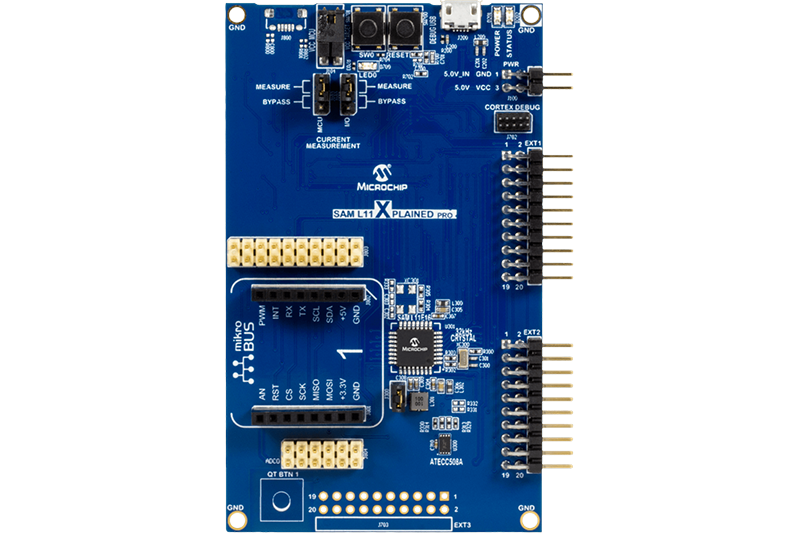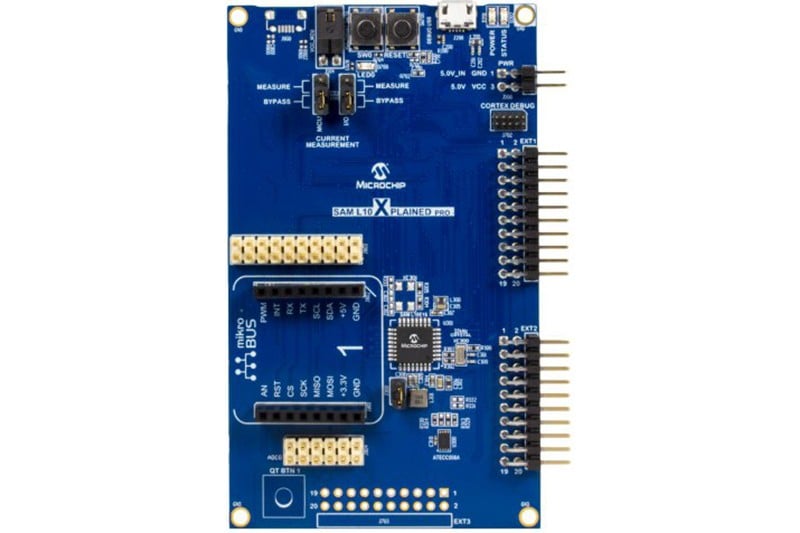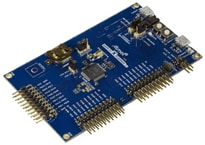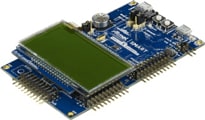Low-Power SAM L MCU Series
With the huge growth of the Internet of Things (IoT) and the widespread use of wearables and low-power accessories, designers increasingly need lower-power solutions that also offer robust security and touch interfaces. Our SAM L family of microcontrollers (MCUs) is built with innovative picoPower® technology to deliver best-in-class low power consumption down to 25 µA/MHz in active mode, under 100 nA in sleep mode and fast wake-up times of 1.2 uS. These MCUs have achieved an EEMBC-certified ULPMark™ score of 410, which is the highest score for an Arm® Cortex®-M23 or Cortex-M0+ class device. In addition to ultra-low-power capabilities, these devices feature an enhanced Peripheral Touch Controller (PTC), robust security, Arm TrustZone® technology, Advanced Encryption Standard (AES) encryption, Full-Speed USB host and device, Event System and SleepWalking, 12-bit analog, built in op amps and much more. Discover how you can use the SAM L series of MCUs to expand battery life from years to decades, add elegant touch capabilities to your product and secure your IoT nodes.
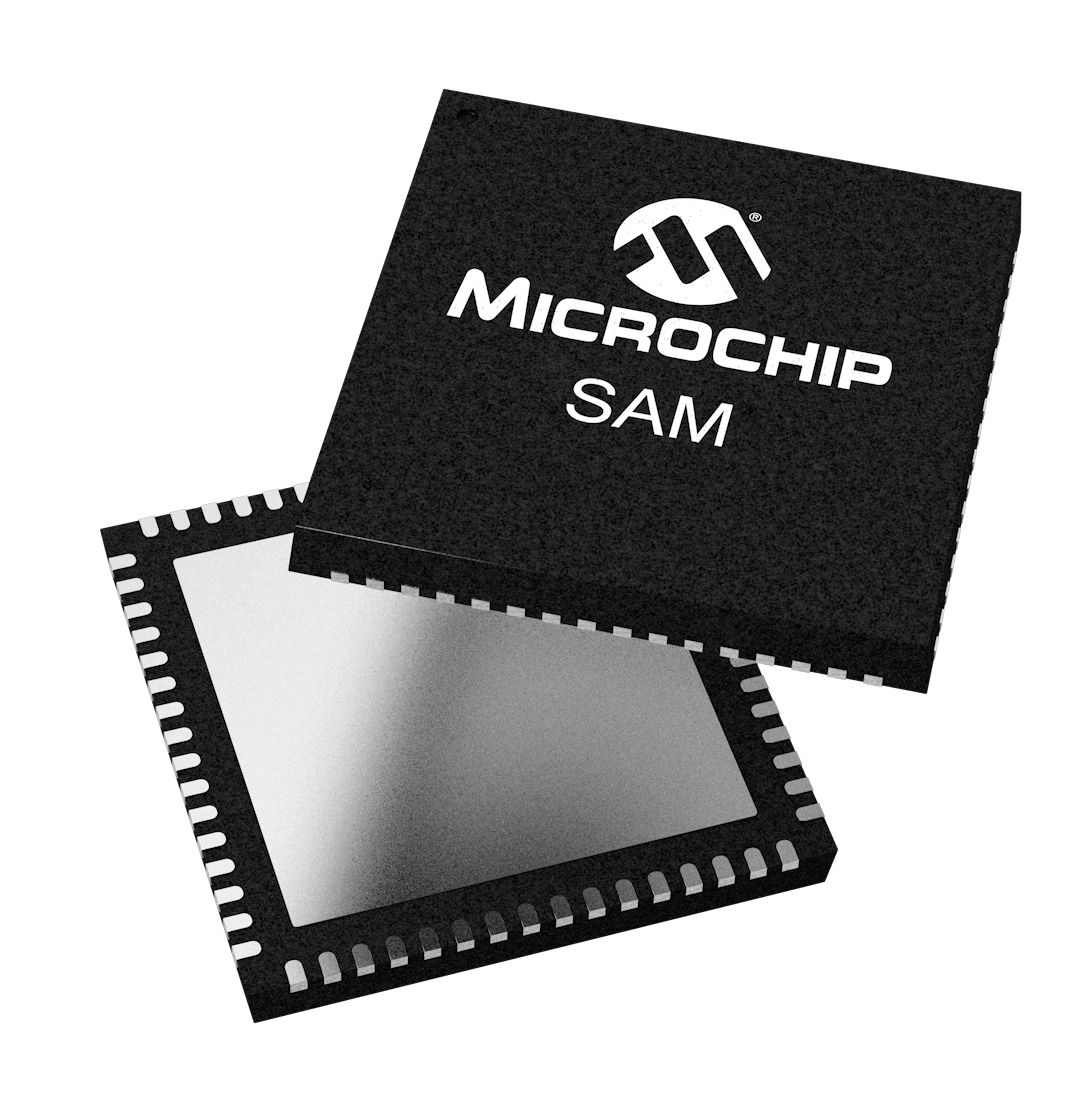
SAM L10
A rich set of peripherals, flexibility and ease of use combined with lowest power consumption in its class, and an enhanced Peripheral Touch Controller (PTC) make the industry’s first Arm Cortex-M23 based microcontrollers ideal for IoT devices, wearables, appliances, low-power industrial applications, metering, battery-powered accessories and general-purpose embedded control. Offering identical peripheral modules, compatible code and a linear address map, the SAM L10 family is designed for simple and intuitive migration between SAM L devices. It is also compatible with the SAM D family of general-purpose MCUs.
- Arm Cortex-M23 based MCU running up to 32 MHz
- Up to 64 KB embedded Flash and 16 KB SRAM
- Ultra-low active and sleep currents of < 25 µA/MHz and < 100 nA
- Enhanced PTC with Driven Shield Plus and Parallel Acquisition
- DMA, Sleepwalking and Event System
- Up to three flexible serial communication modules (SERCOMs)
- Three timers/counters
- 12-bit Analog-to-Digital Converter (ADC) with up to 10 channels and 10-bit Digital-to-Analog Converter (DAC)
- Three op amps, two analog comparators and programmable logic block
- TQFP, SSOP, QFN and WLCSP package options
- Temperature options: −40°C to 85°C and −40°C to 125°C
SAM L11/SAM L11-KPH
As the industry’s first and lowest-power MCUs to feature robust chip-level security and Arm TrustZone technology, the SAM L11 family is ideal for securing IoT nodes for smart cities, home automation, smart agriculture and asset tracking applications. These MCUs also provide secure key storage and authentication capabilities to enable accessory authentication and IP protection. The SAM L11 family is designed for simple and intuitive migration between SAM L devices, offering identical peripheral modules, compatible code and a linear address map. It is also compatible with the SAM D family of general-purpose MCUs.
The SAM L11-KPH includes a factory-provisioned root of trust (key) and Kinibi-M™ Trusted Execution Environment (TEE) to provide an immutable identity for secure application development.
- Arm Cortex-M23 based MCU running up to 32 MHz
- Up to 64 KB embedded Flash and 16 KB SRAM
- Arm TrustZone technology
- Secure boot and secure bootloader
- Crypto accelerators
- Secure debug
- Ultra-low active and sleep currents of < 25 µA/MHz and < 100 nA
- Enhanced Peripheral Touch Controller (PTC) with Driven Shield Plus and Parallel Acquisition
- DMA, Sleepwalking and Event System
- Up to three flexible serial communication modules (SERCOMs)
- Three timers/counters
- 12-bit ADC, 10-bit DAC and three op amps
- Two analog comparators and programmable logic block
- TQFP, SSOP, QFN and WLCSP package options
- Temperature Options: −40°C to 85°C and −40°C to 125°C
SAM L21
A rich set of peripherals, flexibility and ease-of-use combined with ultra-low power consumption make the SAM L21 Arm Cortex-M0+ based microcontroller series ideal for IoT devices, wireless products and any system that needs large memories and low power consumption. The SAM L21 is designed for simple and intuitive migration between SAM L devices, offering identical peripheral modules, compatible code and a linear address map. It is also compatible with the SAM D family of general-purpose MCUs.
- Arm Cortex-M0+ based MCU running up to 48 MHz
- Up to 256 KB embedded Flash and 40 KB SRAM
- Low power consumption at < 35 µA/MHz
- DMA, Sleepwalking and Event System
- Up to six flexible serial communication modules (SERCOMs)
- Up to eight timers/counters
- Full Speed USB device and embedded host
- 12-bit ADC with up to 20 channels and 12-bit two-channel DAC
- Three op amps, two analog comparators and programmable logic block
- Peripheral Touch Controller (PTC) for hardware touch support
- QFP, QFN and WLCSP package options
SAM L22
SAM L22 Arm Cortex-M0+ based microcontrollers offers a rich set of peripherals, flexibility and ease of use, combined with ultra-low power consumption for IoT devices, Human-Machine Interfaces (HMIs), building automation, smart metering, wireless products, and any system that needs a segmented LCD controller, large memories and low power consumption. The SAM L22 family is designed for simple and intuitive migration between SAM L devices, offering identical peripheral modules, compatible code and a linear address map. The SAM L22 is also compatible with the SAM D family of general-purpose MCUs.
- Arm Cortex-M0+ based MCU running up to 32 MHz
- Up to 256 KB embedded Flash and 32 KB SRAM
- Low power consumption at < 39 µA/MHz
- Segmented LCD (SLCD) controller with up to 320 segments
- DMA, Sleepwalking and Event System
- Up to six flexible serial communication modules (SERCOMs)
- Up to five timers/counters
- Full Speed USB device
- 12-bit ADC with up to 20 channels
- Two analog comparators and programmable logic block
- Peripheral Touch Controller (PTC) for hardware touch support
- Tamper detection
- QFP, QFN and WLCSP package options
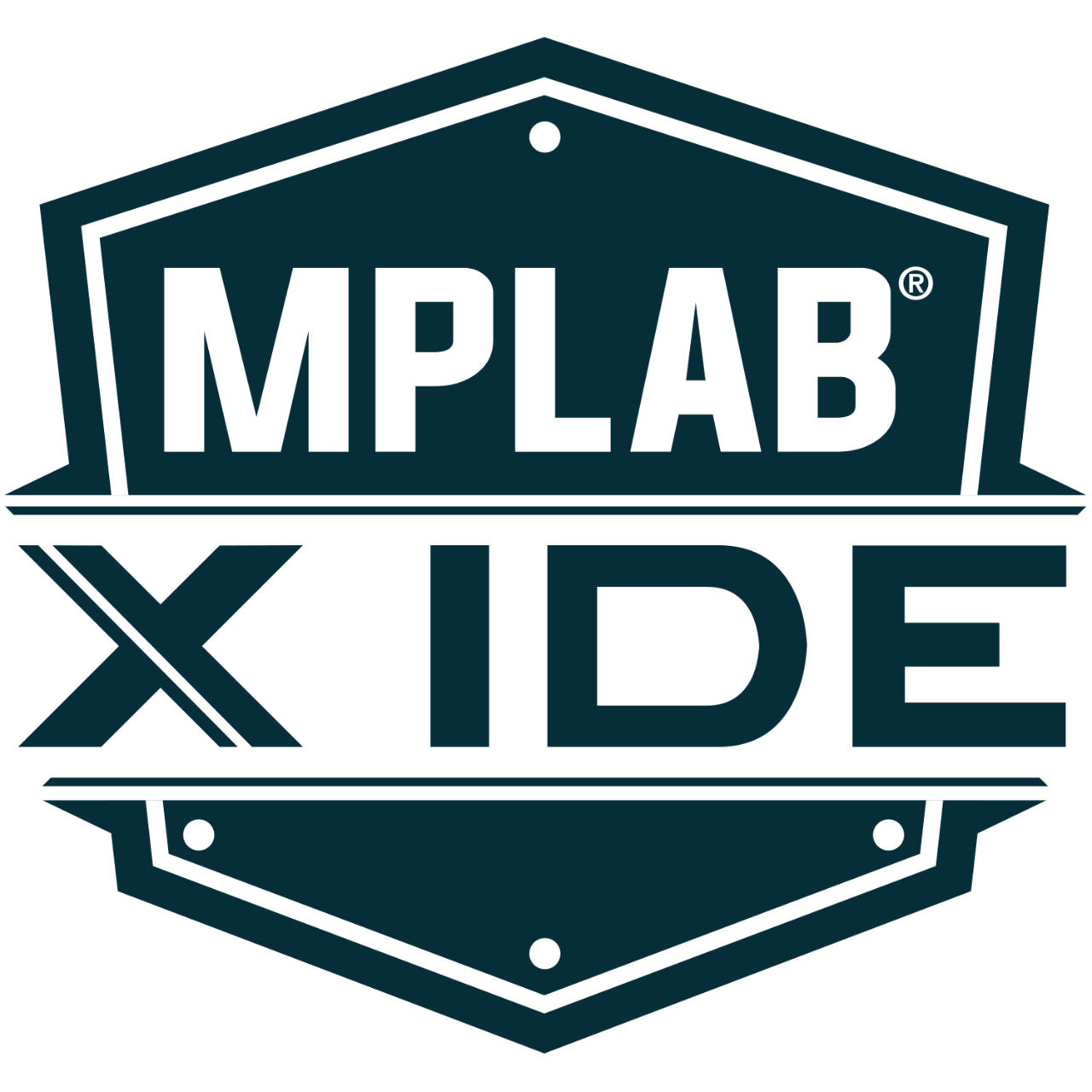
MPLAB® X Integrated Development Environment (IDE)
MPLAB X Integrated Development Environment (IDE) is an expandable, highly configurable software program that incorporates powerful tools to help you discover, configure, develop, debug and qualify embedded designs for most of Microchip’s microcontrollers and digital signal controllers. MPLAB X IDE works seamlessly with the MPLAB development ecosystem of software and tools, many of which are completely free.

MPLAB® Harmony v3 Software Framework
MPLAB Harmony v3 is a flexible, fully integrated embedded software development framework for 32-bit microcontrollers (MCUs). It enables robust framework development of interoperable RTOS-friendly libraries with quick and extensive Microchip support for third-party software integration. MPLAB Harmony includes a set of peripheral libraries, drivers and system services that are readily accessible for application development. The code development format allows for maximum re-use and reduces time to market.
Similar Devices
- Application Notes
- Brochures
- Data Sheets
- Errata
- Product Documents
- Technical Brief
|
Title
|
|
|---|---|
| UART Bootloader SAM L10 and L11 | Download |
| AN_42625 - AT10842: Using the Timer Counter for Control Applications in SAM L22 | Download |
| AN_42641 - AT10700: Smart Card Interface using USART ISO7816 in SAM L22 MCU | Download |
| AN_42627 - AT10843: CPU Usage Demonstration Using DMAC of SAM L22 | Download |
| SAM-BA Monitor for ROMless Cortex M Devices - SAM-BA® Monitor for ROMless Cortex Devices Application Note | Download |
| AN_42623 - AT10839: SAM L22 I2C Slave Bootloader | Download |
| AN_42650 - AT10840: SAM-BA Bootloader for SAM L Series Devices | Download |
| AN2465 - SAM D21 SERCOM SPI Configuration | Download |
| AN_42697 - AT13910: ASF Manual (SAM L22) | Download |
| AN_42495 - AT10458: SAM L22 Tamper Detection using RTC Module | Download |
| AN_42256 - AT07058: SAM D10/D11/D21/DA1/R/L/C Timer Counter for Control Applications (TCC) Driver | Download |
| AN_42257 - AT07683: SAM D09/D10/D11/D21/DA1/R/L/C Direct Memory Access Controller (DMAC) Driver | Download |
| AN_42118 - AT03256: SAM D/R/L/C Serial USART (SERCOM USART) Driver | Download |
| AN_42125 - AT03265: SAM D10/D11/D20/D21/R/L/C EEPROM Emulator (EEPROM) Service | Download |
| AN_42121 - AT03262: SAM D/R/L/C System Pin Multiplexer (SYSTEM PINMUX) Driver | Download |
| AN_42126 - AT03266: SAM D/R/L/C RTC Calendar (RTC CAL) Driver | Download |
| AN_42123 - AT03263: SAM D/R/L/C Timer Counter (TC) Driver | Download |
| AN_42122 - AT03261: SAM D/R/L/C System Interrupt (SYSTEM INTERRUPT) Driver | Download |
| AN_42124 - AT03264: SAM D/R/L/C Watchdog (WDT) Driver | Download |
| AN_42114 - AT03247: SAM D/R/L/C Non-Volatile Memory (NVM) Driver | Download |
| AN_42107 - AT03229: SAM D/R/L/C Peripheral Access Controller (PAC) Driver | Download |
| AN_42116 - AT03254: SAM D/R/L/C I2C Slave Mode (SERCOM I2C) Driver | Download |
| AN_42106 - AT03242: SAM D20/D21/D10/D11/DA1/L/C Analog Comparator (AC) Driver | Download |
| AN_42112 - AT03246: SAM D/R/L/C External Interrupt (EXTINT) Driver | Download |
| AN_42108 - AT03245: SAM D/R/L/C Event System (EVENTS) Driver | Download |
| AN_42117 - AT03250: SAM D/R/L/C I2C Master Mode (SERCOM I2C) Driver | Download |
| AN_42111 - AT03249: SAM D/R/L/C RTC Count (RTC COUNT) Driver | Download |
| AN_42113 - AT03248: SAM D/R/L/C Port (PORT) Driver | Download |
| AN_42494 - AT09886: SAM L22 Getting Started Guide | Download |
| AN_42341 - AT09336: USB Device Interface (UDI) for Human Interface Device Mouse (HID Mouse) | Download |
| AN_42342 - AT09337: USB Host Interface (UHI) for Human Interface Device Mouse (HID Mouse) | Download |
| AN_42340 - AT09335: USB Device Interface (UDI) for Human Interface Device Keyboard (HID Keyboard) | Download |
| AN_42343 - AT09338: USB Device Interface (UDI) for Mass Storage Class (MSC) | Download |
| AN_42344 - AT09339: USB Host Interface (UHI) for Mass Storage Class (MSC) | Download |
| AN_42345 - AT09340: USB Device Interface (UDI) for Vendor Class Device | Download |
| AN_42346 - AT09341: USB Host Interface (UHI) for Vendor Class Device | Download |
| Production Programming of Microchip AVR and SAM Microcontrollers | Download |
| AN_42728 - AT15004:Using SAM-BA for Linux on SAM Devices | Download |
| AN_42337 - AT09332: USB Device Interface (UDI) for Communication Class Device (CDC) | Download |
| AN_42339 - AT09334: USB Device Interface (UDI) for Human Interface Device Generic (HID Generic) | Download |
| AN_42338 - AT09333: USB Host Interface (UHI) for Communication Class Device (CDC) | Download |
| AT09331: ASF USB Stack Manual | Download |
| AN_42382 - AT04056: Getting Started with FreeRTOS on SAM Flash MCUs | Download |
| AN2722 - Getting Started With SAM L10 / L11 Xplained Pro Application Note | Download |
| CPU Usage Demonstration Using DMAC for SAM L10 MCUs Application Note | Download |
| AN2709 - Low Power Features of SAM L Series Devices | Download |
| OPAMP as ADC Gain Amplifier for SAM L10 MCUs Application Notes | Download |
| Low-Power Touch Design | Download |
| EMI, EMC, EFT, and ESD Circuit Design Consideration for 32-bit Microcontrollers Application Note | Download |
| AN_42419 - AT03716: Implementation of SAM L Configurable Custom Logic (CCL) Peripheral | Download |
| AN_42451 - AT11380: SAM L/C Analog-to-Digital Converter (ADC) Driver | Download |
| AN_42506 - AT13481: SAM L22/C21/C20 Frequency Meter (FREQM) Driver | Download |
| AN_42605 - AT13155: SAM L22 Segment Liquid Crystal Display(SLCD) Controller | Download |
| AN_42445 - AT10747: SAM L Advanced Encryption Standard (AES) Driver | Download |
| AN_42453 - AT11512: SAM L Brown Out Detector (BOD) Driver | Download |
| AN_42551 - AT13886: SAM L22 System Clock Management (SYSTEM CLOCK) Driver | Download |
| AN_42438 - AT09423: SAM-BA Overview and Customization Process | Download |
| AN_42499 - AT09192: SAM L22 Segment Liquid Crystal Display (SLCD) Controller | Download |
| Secure Bootloader_SAML11 | Download |
| SAM L11 Security Reference Guide Application Note | Download |
| SERCOM USART on Microchip Cortex Devices (SAM and PIC32C) | Download |
|
Title
|
|
|---|---|
| Basic 32-Bit MCU Design and Troubleshooting Checklist | Download |
|
Title
|
|
|---|---|
| Dual Developer Application Development Use Case with TrustZone on SAM L11 Using MPLAB Harmony v3 | Download |
| The Difference Between MPLAB Harmony v3 PLIBs and Drivers, and When to Use Them | Download |
| How to Setup MPLAB Harmony v3 Software Development Framework | Download |
| ADC Sequencing Using DMA and EVENT System on PIC32C and SAM MCUs Using MPLAB Harmony v3 and MCC | Download |
| Ultra-Low Power Techniques Tech Brief | Download |
Start Your New Design With Improved, Enhanced and Lower-Cost PIC32C MCUs
Related Devices: PIC32CM Lx Family
- Extended memory options of up to 512 KB Flash and 64 KB RAM
- Higher performance of up to 48 MHz
- Pin and feature compatible with SAM L MCUs
- PIC32CM LS60 features integrated ATECC608 secure element in a single in-line package for implementing advanced security
- Available in 48-, 64- and 100-pin packages
Microchip Bootloaders
Bootloaders are used to upgrade firmware on a target device without using an external programmer or debugger. Commonly used with microcontrollers (MCUs), a bootloader contains code that loads and executes an application program. Bootloaders can also perform additional tasks such as validating the code integrity and authenticity.

SAM L Videos Playlist
The SAM L family of microcontrollers (MCUs) is built with innovative picoPower® technology to deliver best-in-class low-power consumption down to 25 µA/MHz in active mode, under 100 nA in sleep mode and fast wake-up times of 1.2 uS. These MCUs have achieved an EEMBC-certified ULPMark™ score of 410, which is the highest score for an Arm® Cortex®-M23 or Cortex-M0+ class device. In addition to ultra-low-power capabilities, these devices feature an enhanced Peripheral Touch Controller (PTC), robust security, Arm TrustZone® technology, Advanced Encryption Standard (AES) encryption, Full-Speed USB host and device, Event System and SleepWalking peripherals, 12-bit analog, built in op amps and much more.
